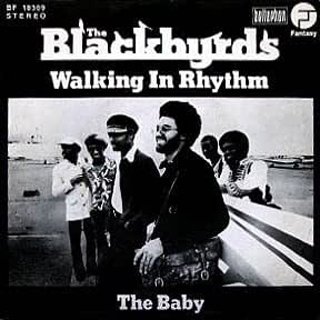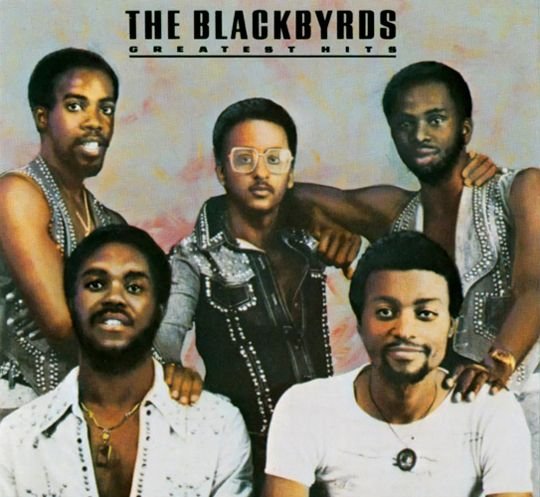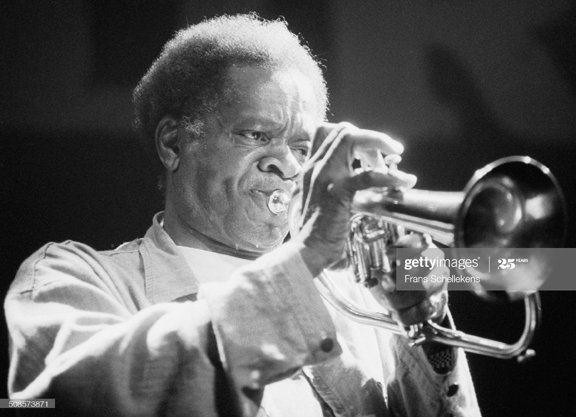Where Are We Going?
Larry Mizell (vocals), Allen Curtis Barnes (saxophone, flute, oboe), Roger Glenn (saxophone, flute), Donald Byrd (trumpet, flugelhorn, electric trumpet, vocals), Fonce Mizell (trumpet, vocals), Dean Parks, David T. Walker and Barney Perry (electric guitar), Freddie Perren (piano, synthesizer, vocals), Joe Sample (piano, electric piano), Kevin Toney (piano), Chuck Rainey, Wilton Felder and Joe Hill (electric bass), Harvey Mason, Sr. and Keith Killgo (drums), King Errisson (congas, bongos), and Bobbye Hall Porter, Perk Jacobs and Stephanie Spruill (percussion). From the album Black Byrd (1973) by Donald Byrd.
Afterwards The Blackbyrds published Flying Start (1974), in which they prepare another tasty jazz-funk menu for dancing, offering an accessible version of jazz fusion that was later welcomed by hip hop. From the album came the single “Walking in Rhythm”, the greatest success in the group’s career, which was certified gold, reached sixth place on Billboard Hot 100 and entered the top ten on the Billboard‘s Easy Listening Chart.
 Single cover
Single cover
Source
In 1975 City Life arrived, in which Barnes is replaced by Stephen Johnson playing only the tenor saxophone and there is a fluid interaction between musicians. “Happy Music” was ranked number 19 on the Billboard Hot 100 and “Rock Creek Park” was also heard very much. That same year they composed the soundtrack for Larry Fishburne’s drama film Cornbread, Earl and Me. Finally they launched their last albums Unfinished Business (1976), Action (1977) and Better Days (1980) without any mentionable impact and in 1980 they dissolved.
 The Blackbirds
The Blackbirds
Source
Meanwhile Donald Byrd had recorded in 1973 Street Lady, full of non-melody voices, flutes, wah-wah guitars, hesitant electric pianos and powerful percussion. It’s not jazz, rhythm and blues, funk or fusion, but sounds like the music of a television movie of the time. In 1975 it was followed by Stepping into Tomorrow consisting of very relaxed and melodic arrangements with mixed vocals, rhythm guitar, piano and organ talking softly, slight synthesizer hints and a whispering support from electric bass and drums. Next came Places and Spaces (1975), in which Byrd carries on experimenting with rhythm and blues, soul and funk, this time with three blunt trumpets and a trombone, seductive rhythm guitars and string arrangements, leaving open spaces for the music to sound more funky.
 Donald Byrd
Donald Byrd
Source












